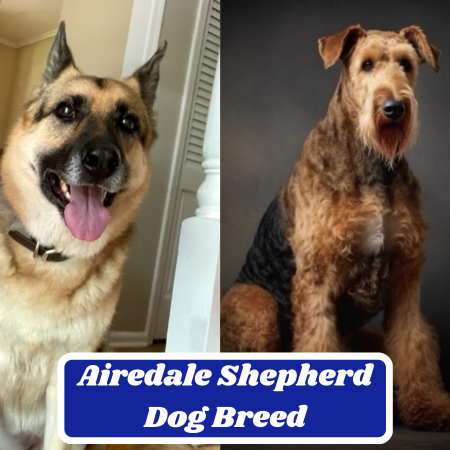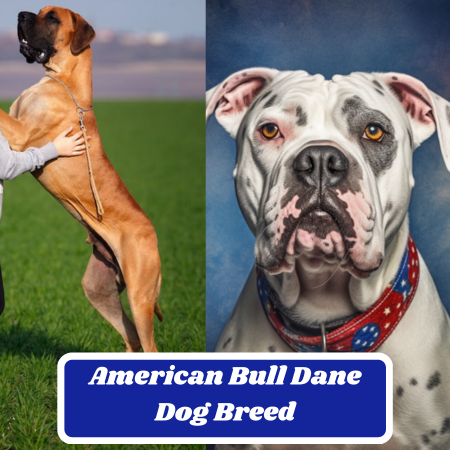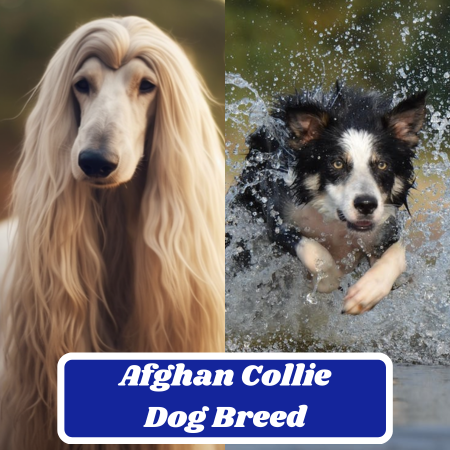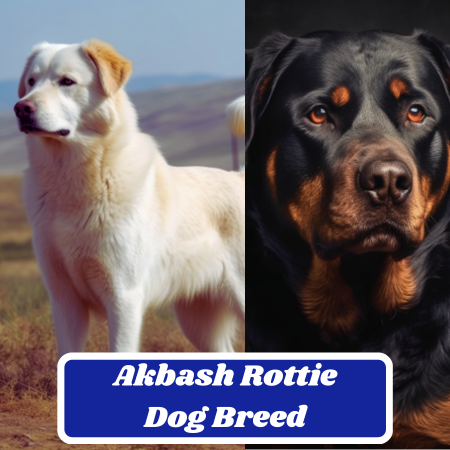Alaskan Klee Kai Dog Breed: Characteristics, Information & Facts
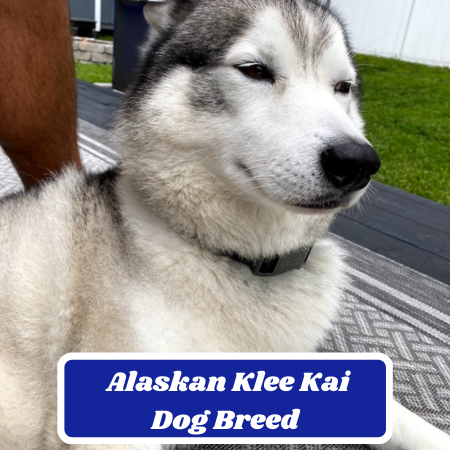
| Size | ⭐️⭐️⭐️⭐️☆ |
|---|---|
| Small-sized breed | ⭐️⭐️⭐️⭐️☆ |
| Height ranges from 13-17 inches | ⭐️⭐️⭐️☆☆ |
| Weight ranges from 5-22 pounds | ⭐️⭐️⭐️☆☆ |
| Lifespan of 12-16 years | ⭐️⭐️⭐️⭐️☆ |
| Colors include black, white, gray, and red | ⭐️⭐️⭐️☆☆ |
| Double coat with a soft undercoat and a longer, coarser topcoat | ⭐️⭐️⭐️☆☆ |
| High energy levels | ⭐️⭐️⭐️⭐️☆ |
| Generally healthy breed with few health issues | ⭐️⭐️⭐️⭐️☆ |
The Alaskan Klee Kai: History and Introduction
Have you ever heard of the Alaskan Klee Kai? This relatively new breed of dog has only been around since the 1970s, but it has quickly gained popularity among dog lovers. Developed in Alaska by a woman named Linda Spurlin, the Alaskan Klee Kai was created by breeding Siberian and Alaskan Huskies with smaller breeds like Schipperkes and American Eskimo Dogs.
The goal was to create a miniature version of the Husky, with all of its desirable traits in a smaller package. The name “Klee Kai” means “small dog” in Inuit, which is fitting for this petite but powerful breed.
They were first recognized as a breed by the United Kennel Club in 1997, and later by the American Rare Breed Association and the Canadian Kennel Club. So what exactly is an Alaskan Klee Kai?
Essentially, it’s a mini version of a Siberian or Alaskan Husky. They look very similar to their larger counterparts, with thick fur coats and piercing blue eyes that give them an iconic wolf-like appearance.
However, they are much smaller in size – typically weighing between 10-20 pounds as adults. Despite their small stature, they are still considered working dogs and have plenty of energy and intelligence to spare.
Appearance and Size
The Alaskan Klee Kai’s Physical Appearance
When you first lay eyes on an Alaskan Klee Kai, you’ll likely be struck by their striking wolf-like appearance. These dogs have a double coat that comes in a variety of colors, including black, white, gray, and red.
They have erect ears and a curled tail that sits over their back, as well as piercing blue or brown eyes. These dogs typically stand between 13-17 inches tall at the shoulder and weigh between 10-25 pounds.
Despite their small size, they are sturdy dogs with muscular legs that are built for endurance. Their compact size makes them perfect for apartment living or homes with limited outdoor space.
Comparison to Other Breeds: Siberian Husky and Alaskan Malamute
The Alaskan Klee Kai is often compared to larger breeds like the Siberian Husky and the Alaskan Malamute due to their wolf-like appearance.
While these breeds share some similarities in terms of appearance, there are several distinct differences. Firstly, the Alaskan Klee Kai is much smaller than both the Siberian Husky and the Alaskan Malamute.
While all three breeds feature double coats designed to keep them warm in cold weather climates, the Alaskan Klee Kai’s coat is shorter and requires less grooming than their larger counterparts. Additionally, while all three breeds are known for being intelligent and independent thinkers, the Alaskan Klee Kai is often described as more reserved than either of these two other breeds.
This makes them great companions for people who prefer a dog that’s more independent-minded but still loyal.
Overall, while there may be some similarities between these three similar-looking breeds, each has unique characteristics that make it important to research before making any decisions about which breed might be best suited for your lifestyle.
Temperament and Personality
| Temperament and Personality Traits | ⭐️⭐️⭐️⭐️☆ |
|---|---|
| Curious, active, intelligent, and agile | ⭐️⭐️⭐️⭐️☆ |
| Big personalities | ⭐️⭐️⭐️⭐️☆ |
| Friendly and playful | ⭐️⭐️⭐️⭐️☆ |
| Loyal and loving | ⭐️⭐️⭐️⭐️☆ |
| Can be stubborn and typically aloof with those they don’t know | ⭐️⭐️⭐️☆☆ |
| Highly intelligent and quick | ⭐️⭐️⭐️⭐️☆ |
| Highly agile and energetic | ⭐️⭐️⭐️⭐️☆ |
| Responds well to training | ⭐️⭐️⭐️⭐️☆ |
The Alaskan Klee Kai’s Temperament
The Alaskan Klee Kai is known for being a loyal and affectionate dog that loves to be around its family. They are intelligent, curious, and playful, making them a great choice for families with children. They do well in active households that can provide them with plenty of exercise and mental stimulation.
However, they can be reserved or aloof with strangers. This isn’t necessarily a negative trait as it means they will make excellent watch dogs who will alert their owners if anyone unfamiliar approaches the property.
Additionally, they may exhibit a strong prey drive due to their history as sled dogs which hunted small game such as rabbits. This means owners must always supervise their Klee Kai when playing or interacting with smaller animals.
Interacting With Children
Alaskan Klee Kai are generally good-natured dogs that love playing and spending time with children. That being said, it’s important to supervise interactions between children and any dog breed regardless of how gentle the breed is known to be.
As an energetic breed, make sure there is plenty of space for playtime activities with minimal risk of injury or accidents. Instruct your children on how to properly interact with the dog by showing them where it’s safe to pet him/her (avoiding face/hindquarters) and how not to pull on tails or ears.
Interacting With Other Pets And Strangers
Alaskan Klee Kai’s socialization is key when bringing one home because socialization helps your furry friend learn how to behave properly around other people and animals while exploring new settings safely. With proper socialization from puppyhood onwards, Alaskan Klee Kai can coexist peacefully alongside other household pets like cats or dogs though early supervision during playtime sessions may be necessary until everyone gets to know each other sufficiently.
When around strangers, Klee Kai can be quite aloof or reserved. Owners will need to focus on early socialization that involves exposure to different people and situations that will help their pet learn how to interact appropriately when in social settings outside of the home.
Exercise and Training Needs
| Training and Exercise Needs | ⭐️⭐️⭐️⭐️☆ |
|---|---|
| Requires about half an hour of exercise every day | ⭐️⭐️⭐️⭐️☆ |
| Very intelligent and trainable | ⭐️⭐️⭐️⭐️☆ |
| Walking/jogging: Two 30-minute walks (or 20-minute jogs) per day is a good target | ⭐️⭐️⭐️⭐️☆ |
| Can play fetch indoors or outdoors | ⭐️⭐️⭐️⭐️☆ |
| Exercise needs depend on age and energy level | ⭐️⭐️⭐️☆☆ |
How much exercise they need daily
Alaskan Klee Kai are active dogs that require a moderate amount of exercise each day. They are not as high-energy as some other breeds, but still need to be taken on walks or runs and have opportunities to play outside.
A good goal for their daily physical activity is at least 45 minutes to an hour. It’s important to note that exercise needs can vary depending on the age, size, and individual personality of your Alaskan Klee Kai.
Puppies should not be over-exercised due to their developing bones and joints, while older dogs may need less physical activity due to decreased mobility or other health issues. Always consult with your veterinarian and observe your dog’s behavior to determine the appropriate amount of exercise.
Tips on training an Alaskan Klee Kai effectively
Training an Alaskan Klee Kai can be both enjoyable and challenging.
They are intelligent dogs eager to please but also have a stubborn streak. Positive reinforcement training methods work best with this breed, using treats or praise as rewards for good behavior.
Consistency is key when it comes to training Alaskan Klee Kai.
Establishing clear rules and boundaries from the beginning is important so they understand what is expected of them.
This breed also responds well to socialization training early in life, which can help prevent behavioral issues such as separation anxiety or aggression towards other pets. It’s also important to keep training sessions short and engaging for this breed since they tend to have shorter attention spans compared to some others.
Mixing up activities like obedience training with games like fetch or hide-and-seek can help keep them interested and motivated during training sessions. With patience, consistency, and positive reinforcement techniques, you’ll find that your Alaskan Klee Kai can learn a variety of tricks and behaviors fairly easily.
Health Concerns
| Health Issues | ⭐️⭐️⭐️☆☆ |
|---|---|
| Predisposed to Juvenile Cataracts, Patellar Luxation, Factor VII Deficiency, Liver Disease | ⭐️⭐️⭐️☆☆ |
| Relatively free of genetic issues | ⭐️⭐️⭐️⭐️☆ |
| Factor VII Deficiency – an inherited blood-clotting disorder which can lead to excessive bleeding | ⭐️⭐️⭐️☆☆ |
Common health issues that affect this breed
Like all breeds, the Alaskan Klee Kai is prone to certain health issues. One of the most common is patellar luxation, which occurs when the kneecap slips out of place. This can cause pain or discomfort and may require surgery to correct.
Another frequent issue is hip dysplasia, where the hip joint does not form correctly and can lead to arthritis or difficulty walking.
Another common health concern for Alaskan Klee Kai dogs is dental disease.
This breed can be prone to tartar buildup and gum disease, which can cause tooth loss and other complications if left untreated. Additionally, some dogs may experience allergies or skin irritations due to environmental factors or food sensitivities.
Ways to prevent or manage these health concerns
Fortunately, there are steps pet owners can take to prevent or manage these health concerns in their Alaskan Klee Kai dogs.
Regular veterinary checkups are crucial for catching any potential issues early on, so be sure to schedule routine exams at least once a year.
To prevent dental disease, it’s important to brush your dog’s teeth regularly with a soft-bristled toothbrush and canine-specific toothpaste.
Avoid giving your dog table scraps or sugary treats that can contribute to tartar buildup.
To manage allergies or skin irritations, work with your veterinarian to identify potential allergens and develop a plan for reducing exposure. This may involve changing your dog’s diet or using medications like antihistamines.
In terms of preventing patellar luxation and hip dysplasia, choosing a reputable breeder who performs genetic testing on their breeding stock is key. Additionally, maintaining a healthy weight through regular exercise and proper nutrition can help reduce the risk of joint problems in Alaskan Klee Kai dogs
Grooming Requirements
| Moderate amount of grooming required | ⭐️⭐️⭐️☆☆ |
| Moderate shedding | ⭐️⭐️⭐️☆☆ |
Information about their grooming needs
Alaskan Klee Kais have a thick double coat that requires regular grooming to keep it healthy. They shed twice a year, and during these times, they will require more frequent brushing to help remove the loose undercoat. A slicker brush is recommended for daily use as it will help remove tangles and mats in their fur.
Also, a metal comb is useful for removing any remaining tangles or dead hair.
Their coat color can range from black and white to gray and white, or red and white, so it’s essential to choose the right shampoo for your dog.
It’s best to use mild shampoos that are specifically designed for dogs with sensitive skin as harsh shampoos can cause skin irritation. When bathing an Alaskan Klee Kai, be careful not to get water in their ears as this can lead to ear infections.
Tips on how to keep their coat healthy
To keep an Alaskan Klee Kai’s coat healthy, it’s important to brush them regularly using the appropriate tools like slicker brushes and metal combs.
Brushing removes dirt, debris, and loose fur that might have accumulated over time in their coat.
Trimming your dog’s nails every four weeks can also be helpful in keeping them well-groomed. Long nails can cause discomfort when walking or running and even affect your dog’s balance.
Always remember that grooming sessions should be an enjoyable experience for both you and your Alaskan Klee Kai.
Make sure you reward them with treats or praise after successfully grooming them – this reinforces positive behavior around grooming activities while strengthening your bond with your furry friend.
Keeping an Alaskan Klee Kai well-groomed requires some effort but is ultimately rewarding when done correctly. Regular brushing helps maintain healthy coats while trimming nails prevents discomfort for them, and ensuring that grooming sessions are a positive experience will help keep your furry friend happy and healthy.
Diet and Nutrition
| Diet Needs | ⭐️⭐️⭐️⭐️☆ |
|---|---|
| Require a high-performance diet based on a lean meat-based protein to thrive | ⭐️⭐️⭐️⭐️☆ |
| Whole grains, protein, and vegetables are recommended | ⭐️⭐️⭐️⭐️☆ |
| No special dietary considerations, but tend to lean towards obesity as they get older | ⭐️⭐️⭐️☆☆ |
| Raw feeding is an option | ⭐️⭐️⭐️⭐️☆ |
The recommended diet for an Alaskan Klee Kai
When it comes to feeding your Alaskan Klee Kai, choosing a high-quality diet that meets their nutritional needs is important.
Look for dog food that contains high-quality protein sources, such as chicken or fish, as well as essential vitamins and minerals.
Avoid foods with fillers like corn or wheat.
Many Alaskan Klee Kai owners feed their dogs a raw diet consisting of raw meat, fruits, and vegetables.
However, this diet requires careful preparation to ensure your dog gets all the nutrients they need.
Talk to your vet first if you’re considering a raw diet for your Alaskan Klee Kai.
Information about feeding schedules, portion sizes, etc.
The amount of food you should feed your Alaskan Klee Kai depends on their size and activity level.
Typically, adult Alaskan Klee Kai need around one cup of food per day divided into two meals. Puppies will require more frequent feeding schedules.
It’s important not to overfeed your Alaskan Klee Kai because they are prone to weight gain if they don’t get enough exercise. Be sure to measure out portions carefully and avoid giving them table scraps or excessive treats.
Additionally, make sure your dog always has access to clean drinking water. It’s especially important during hot weather or after exercise when they may become dehydrated quickly.
You can add electrolyte supplements in their water bowl if needed to help replenish lost fluids after heavy exercise sessions.
When choosing the right diet plan for your precious furry companion, you must thoroughly research what foods best suit their nutritional needs along with the appropriate serving sizes that work best for them based on their age and size!
Breeding Information
Explanation of breeding practices for this breed
Breeding Alaskan Klee Kai is a serious responsibility that requires a thorough understanding of the breed, its genetics, and proper breeding practices. Before considering breeding your Alaskan Klee Kai, it is important to have your dog thoroughly health tested for common genetic conditions.
You should also ensure that your dog has attained the necessary age, typically 2 years old or more, before attempting to breed.
To ensure healthy puppies, choosing a reputable breeder who follows responsible breeding practices is essential.
These practices include screening all potential parents for genetic diseases and conditions prevalent in the breed, only breeding dogs that meet high standards of physical health and temperament, and providing proper socialization and care for their puppies.
It is important to note that reputable breeders will never overbreed their dogs or engage in puppy mills.
Factors to consider when choosing a breeder
Choosing the right breeder can mean the difference between bringing home a healthy puppy with an excellent temperament and dealing with ongoing medical issues or behavioral problems down the line.
When choosing an Alaskan Klee Kai breeder, there are several key factors you should consider:
- 1) Reputation: Researching a breeder’s reputation can help you determine whether they are reputable. A good place to start is by visiting online forums or asking for recommendations from trusted friends or family members who own Alaskan Klee Kai.
- 2) Health Testing: Reputable breeders will have their dogs screened before breeding for any genetic diseases that are known to affect Alaskan Klee Kai.
- 3) Breeding Standards: High-quality breeders have strict standards when selecting which dogs they will use in their breeding program. They only select those with excellent temperaments and physical health.
- 4) Socialization: Puppies need socialization from an early age to grow into well-adjusted adult dogs. Reputable breeders provide socialization opportunities for their puppies in a variety of settings, such as with people of all ages and other animals.
- 5) Aftercare and Support: A good breeder will support you throughout your dog’s lifetime.
They should provide guidance on care, feeding, and training and be available to answer any questions or concerns you may have. By considering these factors when choosing your Alaskan Klee Kai breeder, you can ensure that your new puppy is healthy, happy, and well-adjusted.
Conclusion
Alaskan Klee Kai dogs are a unique and highly desirable breed for their loyalty, intelligence, and playful personalities. They require a lot of attention and daily exercise to thrive, but their loving nature makes them well worth the extra effort.
With proper training and socialization, they make wonderful family pets that are great with children and other pets.
This breed’s small size makes them an excellent choice for those who want the look of a Husky or Malamute but cannot accommodate the larger size.
Their striking looks make them stand out in a crowd, while their affectionate personalities keep their owners coming back for more.
It is important to remember that owning an Alaskan Klee Kai comes with responsibilities such as regular grooming, adequate exercise, and proper diet.
However, if you are willing to put forth the effort to care for this unique breed properly, you will be rewarded with many years of love and companionship.
Overall, the Alaskan Klee Kai is an amazing breed that possesses qualities not found in other dog breeds.
Their small size combined with their wolf-like appearance will leave everyone who sees them amazed and intrigued. If you’re looking for a loyal companion that will bring so much joy into your life then look no further than the Alaskan Klee Kai!

